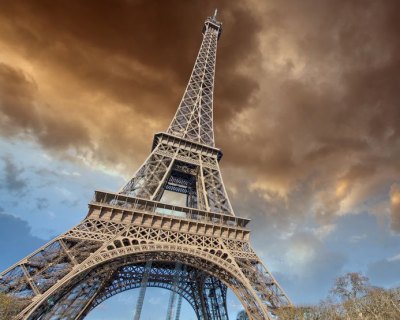France's historic tower now a symbol of peace

The Eiffel Tower was built for a fair.
The tower’s lights dimmed in mourning for the loss of at least 129 victims in suicide bombings and shootings in Paris on Nov 13. In the wake of the attack, the Paris landmark was closed over the weekend, but a message on its website Nov. 16 announced that the tower had reopened.
Drawings of the tower, depicted as a peace sign, are everywhere. La Tour Eiffel remains a symbol of the city’s culture, strength and resilience, but now it is also a sign of peace. Here are six things to know about the tower's history:
- The tower was built for a world fair, the 1889 Universal Exhibition. This was “one of the few world’s fairs to make a profit,” according to the Library of Congress website. The fair was in celebration of the 100th anniversary of the French Revolution, and the tower was the event's central attraction.
- Its designer was Alexandre-Gustave Eiffel (1832-1923). A noted French architect and structural engineer, Eiffel was also involved as a designer for the internal construction of the Statue of Liberty. (Read about his contribution on the National Park Service website.)
- At 300 meters high, the Eiffel Tower took two years to complete. When it opened it was the world’s tallest structure. It held that distinction until 1930, when the Chrysler Building was constructed in New York, according to the tower’s website.
- Not everybody agreed that the tower was beautiful. Indeed, some prominent artists of the day thought it hideous. One described it as a "truly tragic street lamp."
- It was used for scientific research -- and more. While the tower was only supposed to stay up 20 years, its life was extended after Eiffel encouraged its use for scientific research. The tower was used in research on wind resistance, radio waves and more. Not only that, during World War I, the French used the tower to intercept enemy radio messages, including one about a beautiful spy, Margaretha Geertruida Zelle, better known as Mata Hari, who was later arrested and executed. (Read a story about the research on the website of the Society for Science & the Public.)
- Eiffel had a hideaway. The architect wanted to enjoy his creation. He had a secret apartment at the top of the tower. Dignitaries entertained there included Thomas Edison, the website said.
Related:
By the numbers: Sept. 11, 2001, a day of loss
Most young Americans oppose drone strikes
If you would like to comment, give us a shout, or like us on Facebook and tell us what you think.

